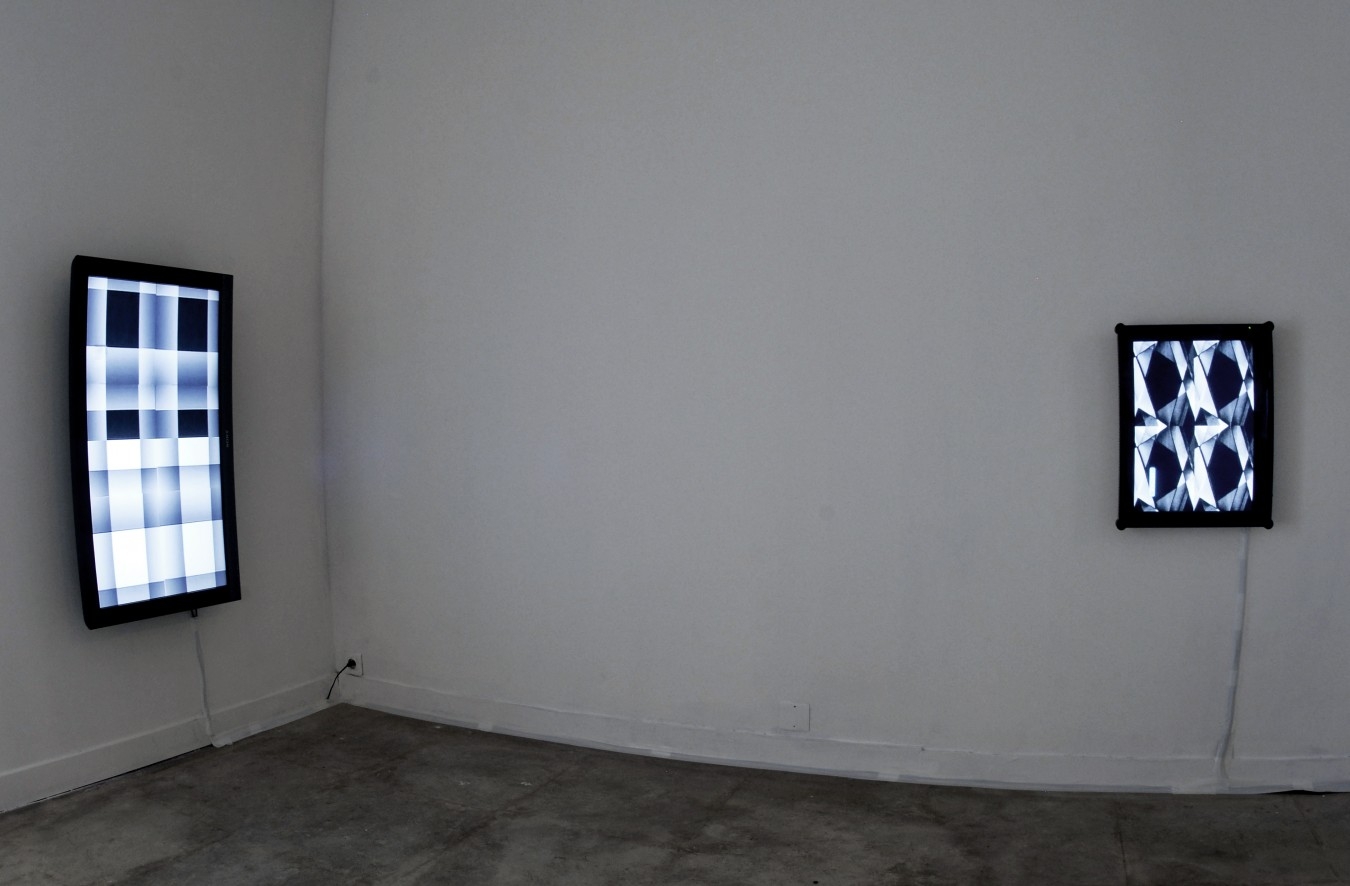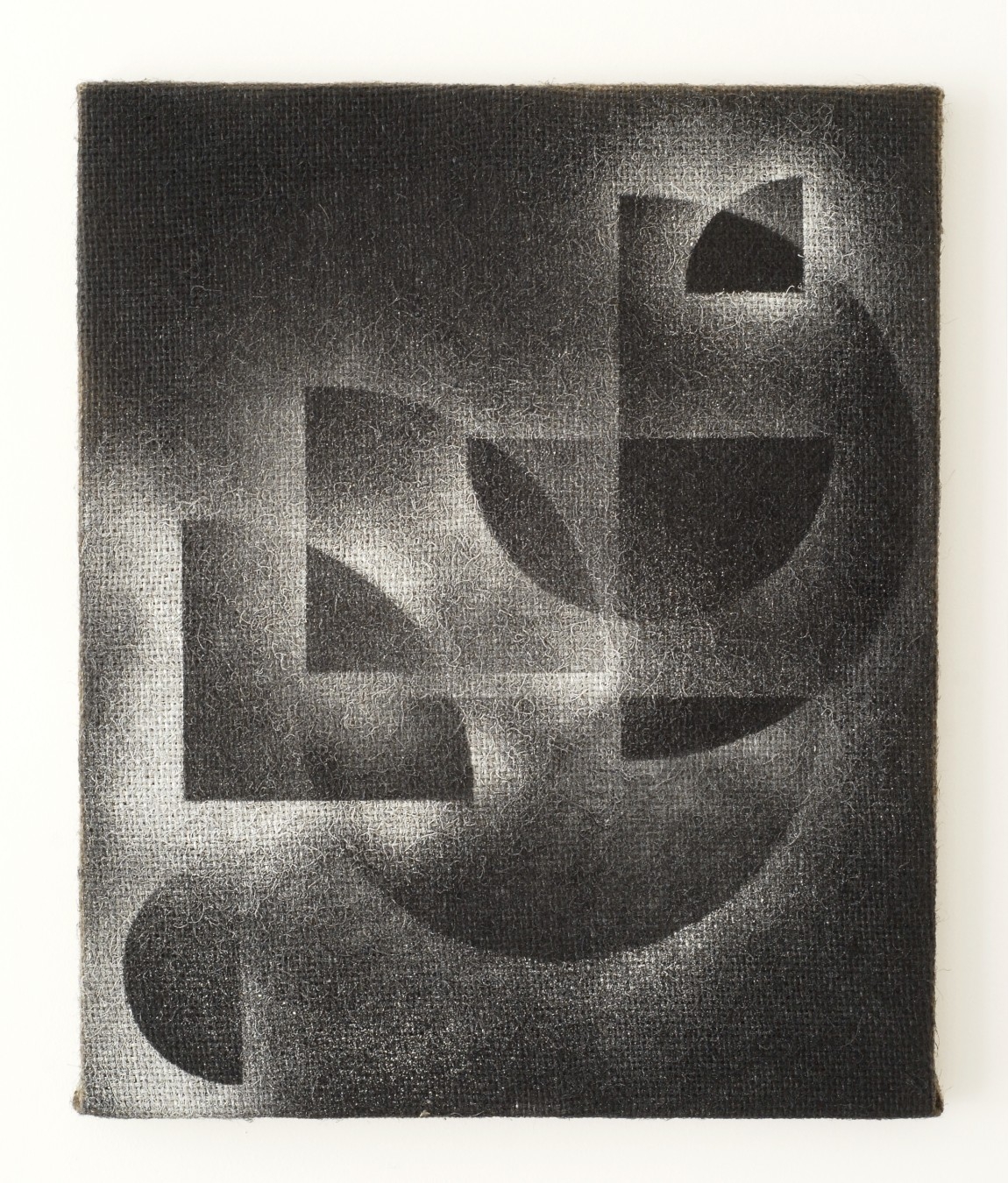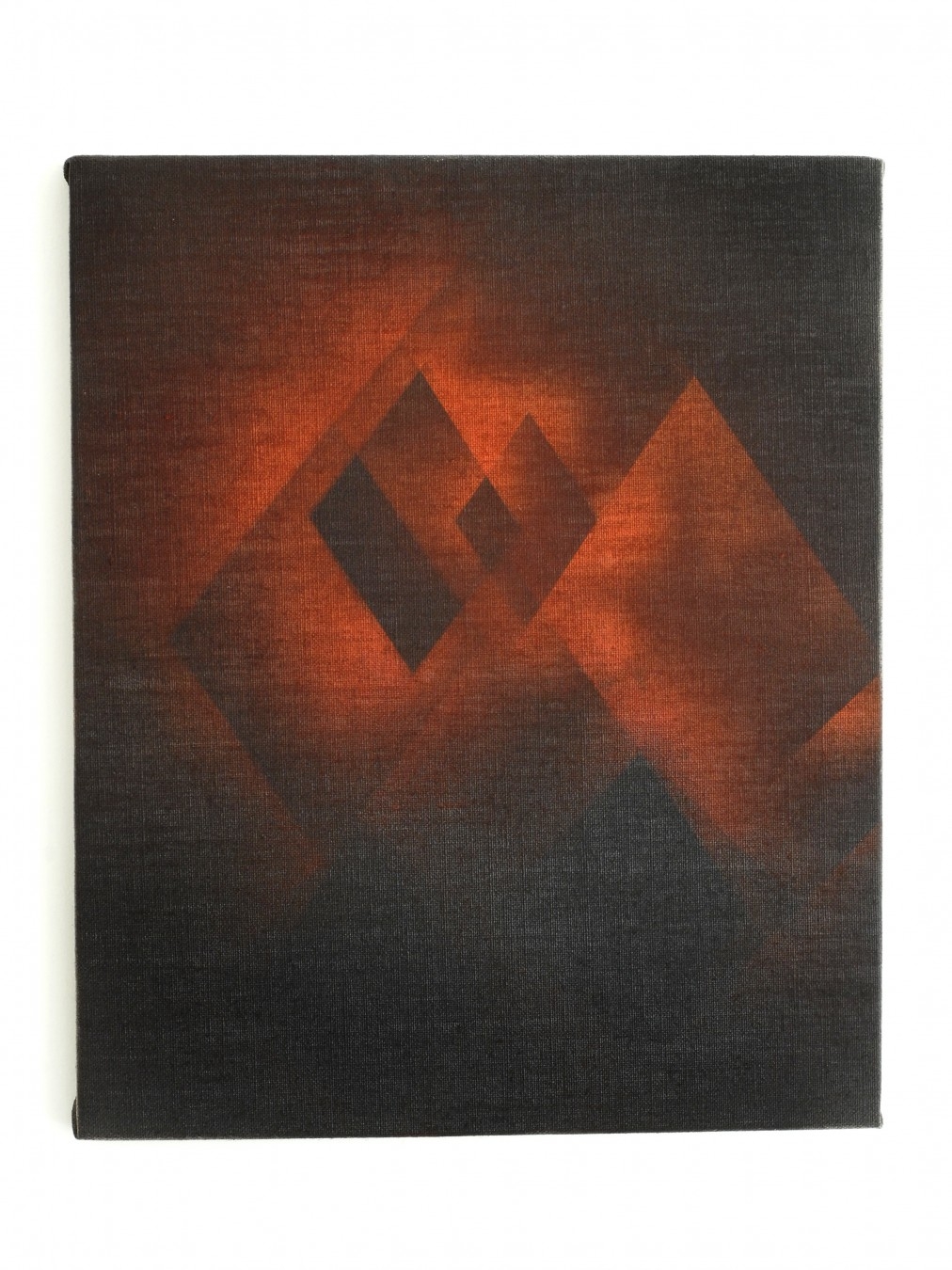Après avoir passé une année de résidence à New York en 2009 (Triangle Studio, Culturesfrance) la pratique des frères Quistrebert, rompant avec le procédé narratif, a évolué vers une abstraction ambigu, sibylline, au gré d’une fascination pour l’architecture et l’ornementation Gotham (Gothic America). Selon leurs dires c’est un style qui « ose des des mélanges formels, alliant élans verticaux gothiques et découpes constructivistes, austérité médiévale et mégalomanie futuriste”. Ils n’ont jamais souhaité s’établir dans un style, mais plutôt le « malmener, le pervertir”, dans une sorte de variation post-moderne du romantisme (si on considère l’absolu conceptuel des années 90 comme moderniste). Leurs dernières toiles constituent ainsi “ le lieu d’un dilemme adressé à l’époque: sommes-nous ici du côté de l’idéalisation de symboles nostalgiques ou de celui de l’incarnation dis- tante du désagrègent et du pourissement des choses ? » (Alexis Vaillant)
Ils choisissent ainsi, s’inspirant des artistes américains de la première moitié du XXeme siècle, et en particulier de Lyonel Feininger (en qui le critique Yves Brochard voit l’incarnation de “l’unité et la base spirituelle des arts dans une ambiance quasi-mystique) de « mêler avant-garde et obscurité ». Ils superposent pour se faire les couches de peinture, à l’image de la méthode du collage, mais également une certaine forme d’appropriation ou de mise en rapport des formes géométriques.
Leurs récentes vidéos, déclinaisons de leurs peintures géométriques, rappellent les films d’avant-garde de Lazlo Moholy-Nagy, ou ceux de Hans Richter qui permettaient une combinaison infinie de formes géométriques. Elles sont réalisées à base d’ombres filmées sur un drap par un appareil numérique. De plus en plus présentes dans leur travail, elles se veulent “une version retroussée du futur, un psychédélisme pauvre, noir, blanc et gris ».
Car grâce à ces moyens pauvres, le spray de peinture ou la vidéo low-tech, c’est bien la dégénérescence des utopies que traitent Florian et Michaël Quistrebert, s’écartant ainsi des visions mystiques et idéalistes des grands abstraits. Pour MoholyNagy l’art abstrait projetait “un ordre futur désirable”. Mondrian voyait dans la peinture un modèle d’harmonie universelle et de beauté véritable, et croyait que l’homme, au cours de son développe- ment, la remplacerait par un environnement où il vivrait en harmonie. Kandinsky établissait une profonde relation entre art et société, d’ordre essentiellement religieux. A propos du suprématisme, Malévitch écrit « notre monde de l’art apporte le nouveau, le non-objectif, le pur”. Et la Révolution d’Octobre 1917 crée les conditions de développement de l’avant-garde russe, les artistes adhérant à l’idée qu”un art révolutionnaire était un complément nécessaire aux révolutions politiques et sociales. Jusqu’à ce que les artistes représentent une menace pour la Révolution, étouffée par l’ampleur même de son entreprise.
La dimension religieuse du travail des frères Quistrebert est donc un leurre. C’est peut-être davantage d’un point de vue mystique qu’il faut l’appréhender. Eux préfèrent parler de « psychic », c’est à dire « of the mind », dans une version plus large et moins précise de leur abstraction mediumnique.
Florian & Michaël Quistrebert vivent à Paris. Leurs dernières expositions personnelles ont eu lieu au Domaine départemental de Chamarande (Ex Futuro), à New York (Brothers of the Shadow, Envoy Enterprise) et à Nantes (The Eighth Sphere, Zoo Galerie). Ils ont récemment participé à plusieurs expositions collectives dont NineteenEightyFour (Austrian Cultural Forum, NY), Là-bas (galerie Crèvecœur, Paris) ou encore I’m so Sad my God (ISCP, NY).
 Loading
Loading  Loading
Loading Mary-u-wanna, 2010, exhibition view, Crèvecœur, Paris.
 Loading
Loading Mary-u-wanna, 2010, exhibition view, Crèvecœur, Paris.
 Loading
Loading Mary-u-wanna, 2010, exhibition view, Crèvecœur, Paris.
 Loading
Loading Mary-u-wanna, 2010, exhibition view, Crèvecœur, Paris.
 Loading
Loading Untitled, 2010, spraypaint on canvas, 46 × 38 cm.
 Loading
Loading Untitled, 2010, spraypaint on canvas, 46 × 38 cm.